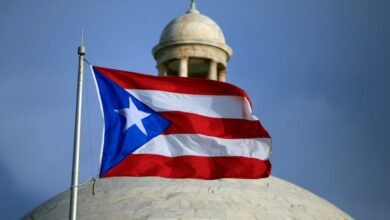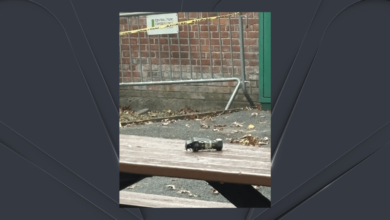Where to view and what to know – NBC New York

One of New York City’s most-loved free summer events is back this week — here’s when the best time will be to view Manhattanhenge and everything else you need to know before going out to get the perfect photo (or at least try to).
The semi-annual solar spectacle occurs when the sunset perfectly aligns with Manhattan’s east-west streets of its traffic grid. Thousands of New Yorkers and tourists alike pour into the streets to view the striking natural occurrence. If you’re looking to see it, Tuesday will offer the best weather.
There will be a “half sun” view of Manhattanhenge, a term claimed to be coined by astrophysicist Neil deGrasse Tyson, on Tuesday night. That occurs when the top half of the sun is visible on the grid before it slips below the horizon.

NBC New York
Sunset Tuesday is at 8:18 p.m. and conditions are going to be ideal: clear skies, temperatures in the mid-70s, low humidity, light wind. No need for a jacket or even a sweater; all you’ll need to capture that perfect picture is your phone (and hopefully crowds that cooperate).
Those hoping to catch the sun set seemingly sink into the city skyline can get the best views on the major crosstown streets:
- 14th Street
- 23rd Street
- 34th Street
- 42nd Street
- 57th Street
Make sure to pick a spot facing west, though it is recommended to head farther east to see the best views of the spectacle. It is also possible to see Manhattanhenge across the East River in the Long Island City section of Queens.

NBC New York
“Unnoticed by many, the sunset point actually creeps day to day along the horizon: northward until the first day of summer, then returning southward until the first day of winter,” Tyson wrote in 1997. “Had Manhattan’s grid been perfectly aligned with the geographic north-south line, then the days of Manhattanhenge would coincide with the equinoxes.”
Tyson, a native New Yorker, noted that the setting sun framed by Manhattan’s high-rises could be compared to the sun’s rays striking the center of the Stonehenge circle on the solstice. But unlike the Neolithic Stonehenge builders, the planners who laid out Manhattan did not mean to channel the sun. It just worked out that way.
Wednesday night’s sunset will showcase the “full sun” Manhattanhenge. This is when the entire sun is in line with the city’s grid just before sunset at 8:19PM.
Unfortunately, Wednesday evening’s weather will not be as cooperative as Tuesday’s. Clouds will be on the increase all day. By sunset, even though buildings won’t obscure a view of the sun, clouds will. On top of questionable visibility, showers and storms are back in the forecast Wednesday night as well.

NBC New York

NBC New York
Expect showers in the city at or around sunset, with maybe even a rumble of thunder mixed in. Needless to say, it won’t be an ideal evening for Manhattanhenge, otherwise known as the Manhattan Solstice.
While hopeful viewers may only get to see a half Manhattanhenge this time around, do not fret: The next full Manhattanhenge will be here before you know it, on July 12.
Is Manhattanhenge an organized event?
Manhattanhenge viewing parties are not unknown, but it is mostly a DIY affair. People gather on east-west streets a half-hour or so before sunset and snap photo after photo as dusk approaches. That’s if the weather is fine. There’s no visible Manhattanhenge on rainy or cloudy days.
Do other cities have “Henges”?
Similar effects occur in other cities with uniform street grids. Chicagohenge and Baltimorehenge happen when the setting sun lines up with the grid systems in those cities in March and September, around the spring and fall equinoxes. Torontohenge occurs in February and October.
But Manhattanhenge is particularly striking because of the height of the buildings and the unobstructed path to the Hudson.





